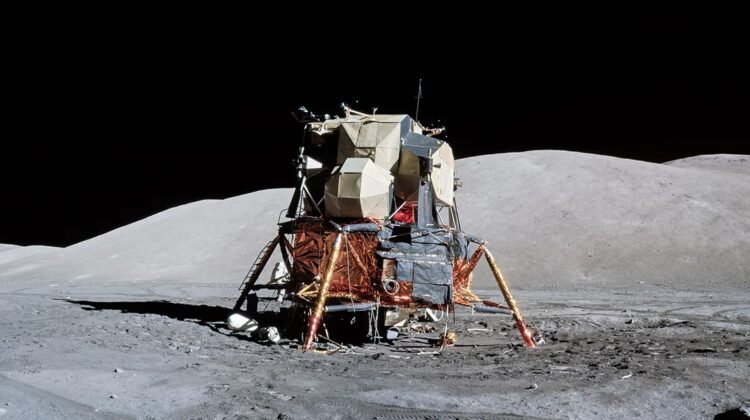
An unexpected revelation has emerged from the decades-old data collected during NASA’s Apollo program missions. Movement detected on the Moon, once thought to be of natural origin, appears to be originating from the Apollo 17 lander itself.
The discovery was made through a meticulous study of seismograph data installed by astronauts during the 1970s. These instruments were strategically placed on the lunar surface to capture seismic activity between October 1976 and May 1977. Upon revisiting this data, researchers stumbled upon a series of regular and repeating tremors, indicating an unusual source.
Typically, earthquakes on Earth send out waves of energy in all directions, offering scientists insights into the planet’s interior through a process known as seismic tomography. Similarly, the placement of seismographs on the Moon aimed to unravel its internal structure. Through careful analysis, scientists have discerned that the Moon possesses an inner core, significantly less dense than that of Earth.

Unlike Earth, where tectonic plate movements drive seismic activity, moonquakes are primarily attributed to solid tidal stresses caused by Earth’s gravitational pull. Additionally, impacts from meteorites and mysterious shallow moonquakes have left scientists puzzled.
In a groundbreaking study, researchers from Caltech deployed machine learning algorithms to scrutinize data from seismographs stationed near the Apollo 17 landing site. What they uncovered was astonishing: a pattern of tremors occurring consistently every lunar morning. Allen Husker, a research professor of geophysics and co-author of the study, described the phenomenon as the lander “popping off” with regular intervals.
Further investigation led the team to conclude that these vibrations originated from the Apollo 17 lander itself. As the lunar morning sun heated the lander, it expanded, emitting distinct creaking vibrations that were picked up by nearby seismographs. This discovery not only sheds light on lunar mechanics but also offers valuable insights for future lunar missions.

Understanding how equipment behaves in the lunar environment is crucial for upcoming endeavors, such as establishing lunar bases or mining operations. By comprehending lunar surface dynamics, scientists hope to map subsurface structures and identify potential mineral deposits, essential for sustaining human presence on the Moon.
Moreover, ongoing lunar missions, such as India’s Vikram lander near the Moon’s South Pole, equipped with seismographic capabilities, continue to uncover mysteries beneath the lunar surface. Recent detections of movement potentially originating from beneath the surface have sparked further intrigue and are currently under investigation.
The revelation of the Apollo 17 lander’s unintended contribution to lunar seismic activity underscores the intricacies of exploring celestial bodies and highlights the importance of reexamining historical data for new insights. As humanity’s exploration of space continues, each discovery brings us closer to unlocking the secrets of the cosmos.

Leave a Reply